
The Grand Meditation
The mythological narratives that establish the Hindu religious beliefs are largely based on the constructive, the destructive, and the meditative forces. The ideal engagement with the omnipotent or the omnipresent has mostly been more re-creative, where one reaches a sense of ending in order to begin anew. A similar narrative is situated around Shiva, who has been a conduit in the philosophy of destruction and recreation.
...
Artist Vikash Kalra enriches our visual space with the richness of Shiva's philosophy, where his Godly stature is an insight to the metaphysical world. This metaphysical sphere is set around myths and rituals which the artist invokes in his work. He sets the tone by creating various stages and moods of Shiva's meditation as he visualises them. One may say that his art is a form of meditation practiced in the methods of incantation where his chants are visualised and performed on his canvases. In the process, each time the image of Shiva is imagined, it is a system of engaging with the symbolism associated with Shiva. His philosophy is so giant that the image becomes a tryst between the realised and unrealised visuality of these incantations. More so, this act of creating Shiva's facial expressions depict Kalra's dialogues with the omnipresent. He does so with the intent of exploring his own metaphysical journey framed on the subject of 'the cosmos'.
The metaphysics here is related to presight, insight and foresight, and, in each case, the artist envisions a dialogue that is directly proportional to the accounts of Shiva's adventurous presentations. Here, the Godly status of Shiva remains in constant flux propelling a movement of beliefs, structures, and artistic in nature. Kalra's art is a reminder of this movement that he himself is often besotted by and, at the same time, this is the same movement that inspires in him a sense of universality that he extends to those looking to find or grow 'roots'.
Kalra sets out to warrant the beginnings of 'creation' in the mythic portrayals of Shiva, where Shiva is the ultimate artist who is not only a forceful source but also the inspiration of creative industries. Shiva's role as the creator is beyond the boundaries of spiritualism and occupied in the centrality of metaphysics. His creation can not be challenged mostly because of the 'might' that Shiva possesses as the creator. Kalra initiates a metaphysical dialogue with Shiva's might in creation. The artist is fully empowered in God's metaphysical probings, where Kalra becomes the muse of the creator and, in return, becomes the tool of Shiva to demonstrate Shiva's presence and his miracles.
In the Shaivaite traditions, the mythic presentations explore Shiva's birthing and allegorical allusions on earth. For instance, it is believed that Shiva emerged on earth as a result of a lightning that struck the ground: one ray of light was seen rushing towards the sky and another ray of light pierced the ground. Shiva's emergence was considered in this interstitial space that was in between the two directions the lighting had struck. This interstitial space is also found in allegorical accounts of yogic practices and in human existence, where the space or lingering moment between inhaling oxygen and exhaling carbon dioxide becomes crucial. It is said that this is where Shiva resides between life and death, between breathing in and breathing out.
Breaking away from the dichotomies of human ethics and constructs, Shiva's presence becomes an interesting avenue to look at the non-binary. His avatar indulges many energies to intersect and, eventually, serves the purpose of a resourceful confluence of ideas. It is not easy to overlook his avatar's structure based on death, birth, and rebirth. Here, symbolic use of ash, third-eye drawn across his forehead, the power-drum (damroo) tied at the neck of his trident, the cow (Nandi) who serves as his medium of transport and messenger, and the tiger-skin that he is often seen wearing as a loincloth (and, sometimes, shown as his seat) are all important gestural supports to the philosophy he is associated with. The rudraksha or stonefruit are markers of this same philosophy and it semiotically refers to the chants of prayers that Shiva is imagined through.
The ardh-narishwar or 'the half of a woman' in Shiva too defines this breakaway from dualities that is largely inscribed in religious or social practices. He restores a sense of balance embroiled in ethical politics or, in this case, gendered binaries. Most narratives based on Shiva expound the system of binaries as a mere means of defined plaintive accounts of 'life'. An opposing system of arguments emerges in Kalra's visual readings. In his account, life is resourceful and the living are empowered by the resources that proliferate life on earth and Shiva is the preserver, destroyer, and creator of life. Thereby, Shiva is life and death and anything that stimulates the remaining elements in between. The ardh-narishwar is not in between. It is the form that embodies all and, as a result, it is the form that becomes the perfect centrality of the universe. Shiva is the ultimate truth, denial, acceptance, form, death, life, birth, performance, and imagination. One may posit that, in practice, Kalra explores the vivacious nature of Shiva in his work only to perform the ultimate metaphysical enquiry into the realised philosophy of the omnipotent form.
Kalra's love and devotion for this omnipotent form emerges as an interesting visual intersection between philosophy, religion, cultural practice, the Arts, and politics. He supposes the emphasis on the form while pursuing a higher goal of meditation. Thereby, the artist meditates between form and philosophy while also attending to the mythic portrayals.
The acrylic on canvas images of Shiva is an attention to his sole goal of attending the perfect state of meditation and meeting the presence of God in himself. Here, he resurrects the artist in him as the gift of life empowered by Shiva's adventurous might. In the process, the mythological transforms into something real and this 'real' is only visible to those willing to look beyond the surface.
Kalra's visual language echoes the stylistic, bold brush-strokes of the European modernists who influenced India's contemporary art practices and he blends it with his own spiritual tranquility. The vibrant colours that evoke the myths surrounding Shiva's grandeur elevates his style to unburden the Indian flavours in belief and in faith. In doing so, he reveals the mystic, the mythic, the mysterious, and, finally, the monk in himself.
All in all, Shiva's tandav performance weighs heavy on human civilization and it has found a creator in Kalra to expose the blurring divides between ideas. Therefore, the artist takes up this baton to visually be in conversation with the richness of Shiva's mantra, tantra, and creation.
ॐ त्र्यम्बकं यजामहे सुगन्धिं पुष्टिवर्धनम् |
उर्वारुकमिव बन्धनान्मृत्योर्मुक्षीय माऽमृतात् ||
By
Dr Satarupa Bhattacharya
Read more
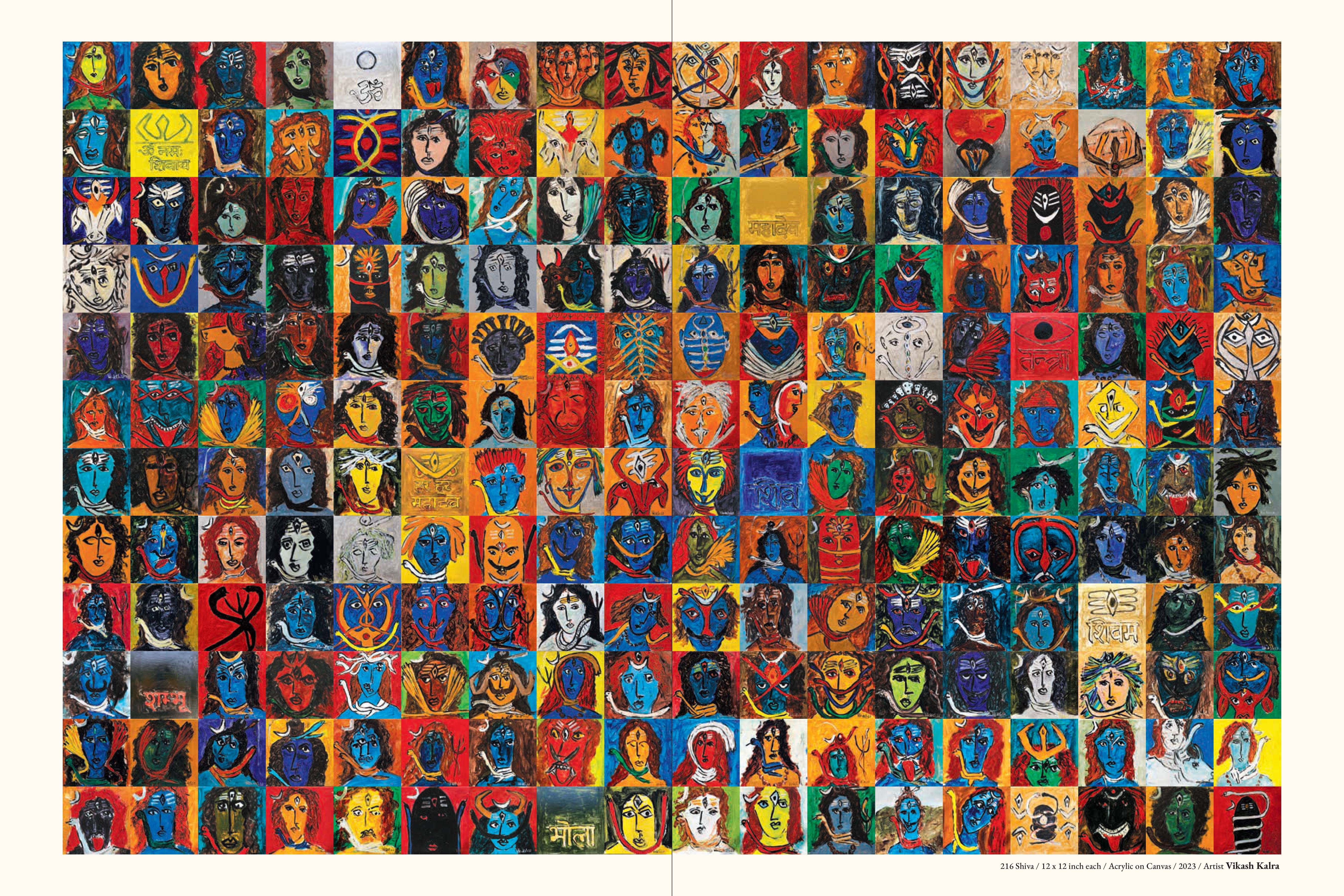

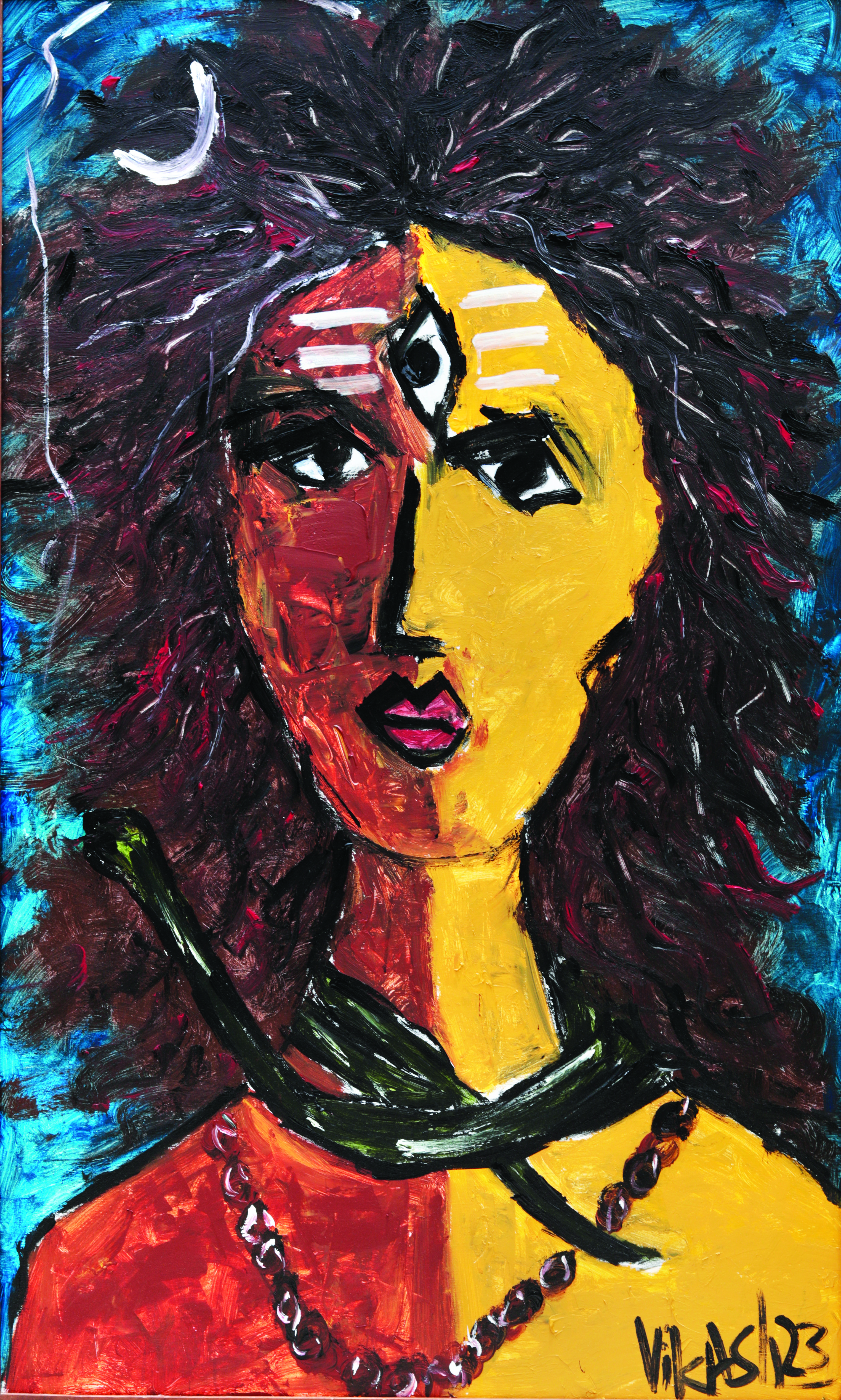
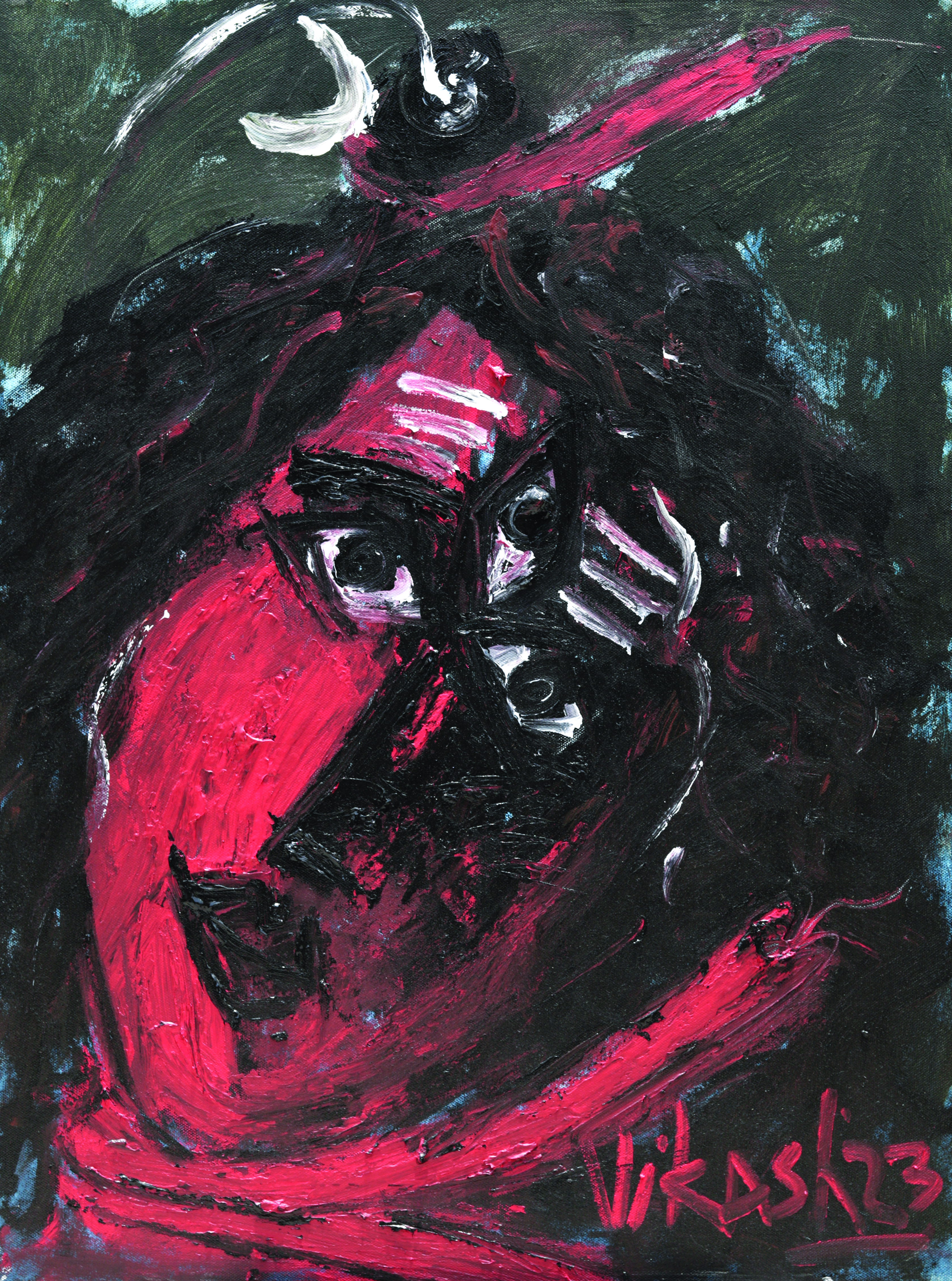

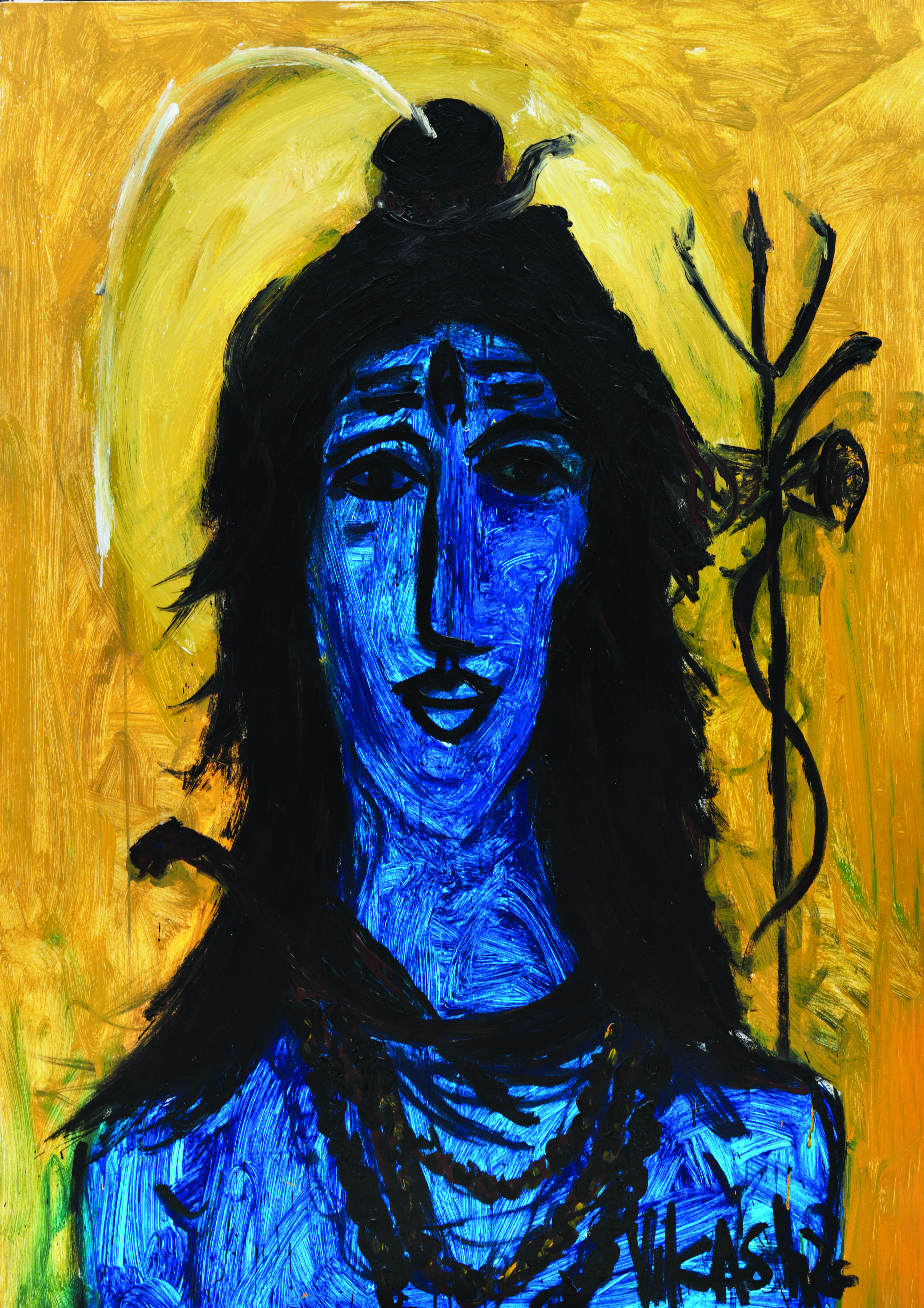
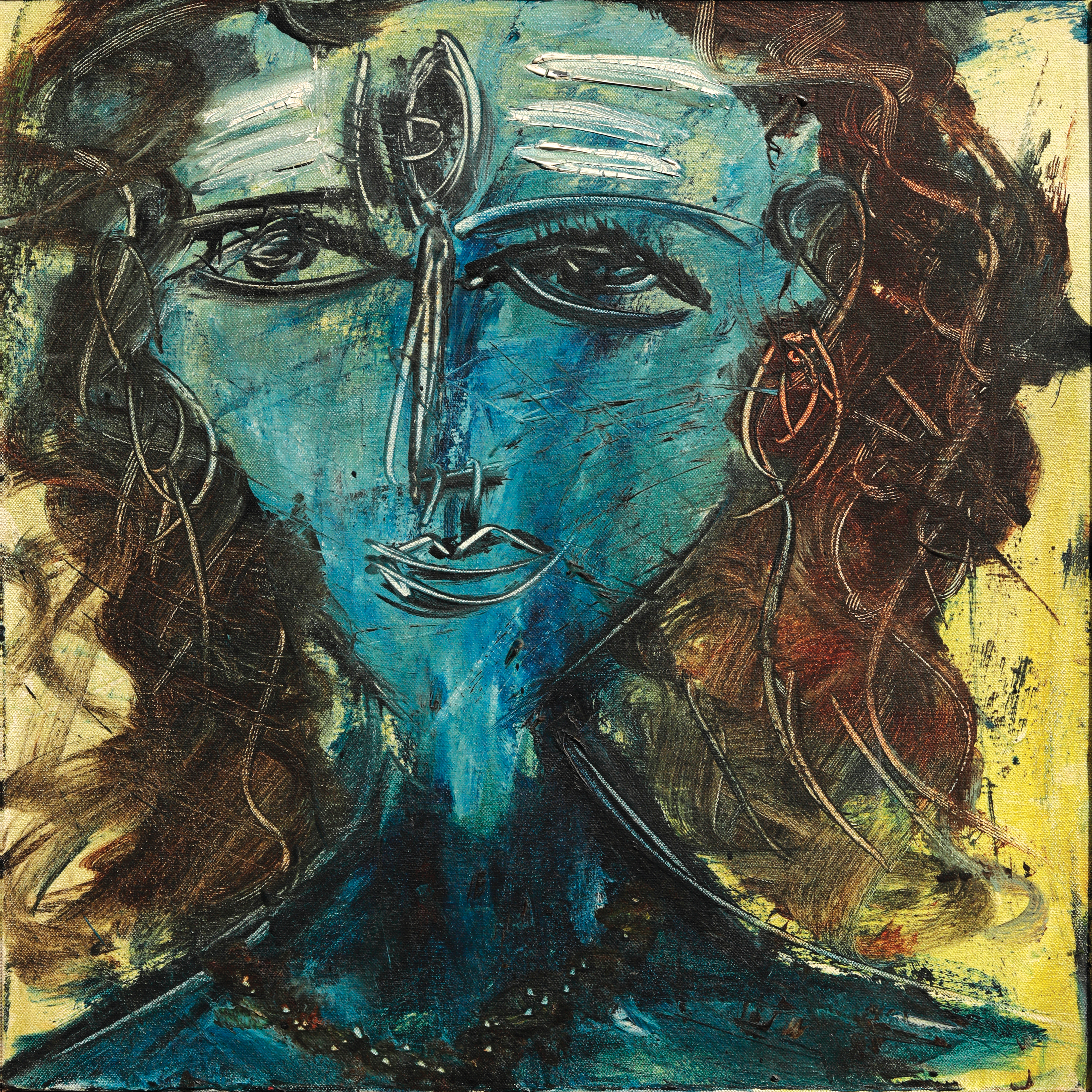

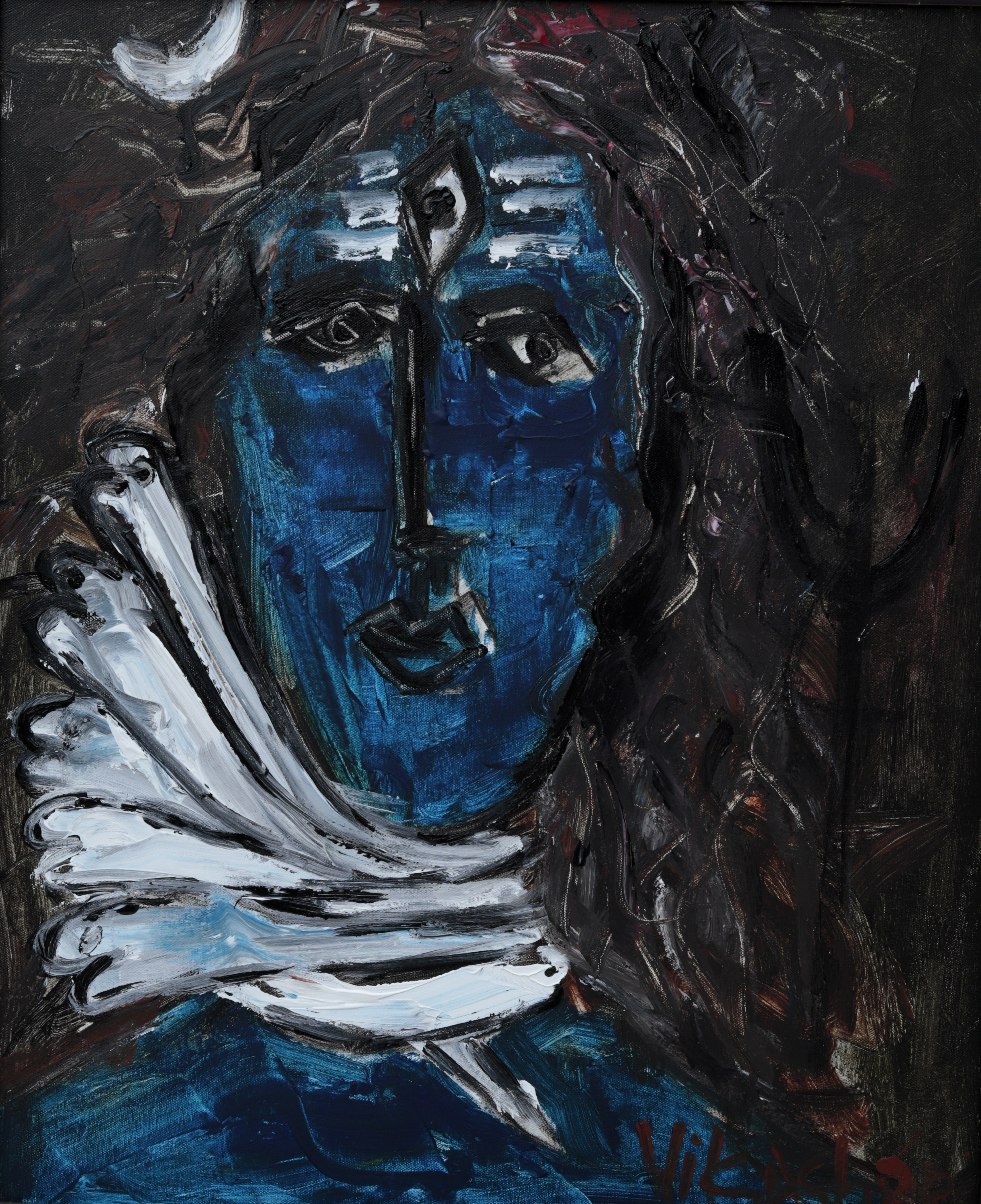



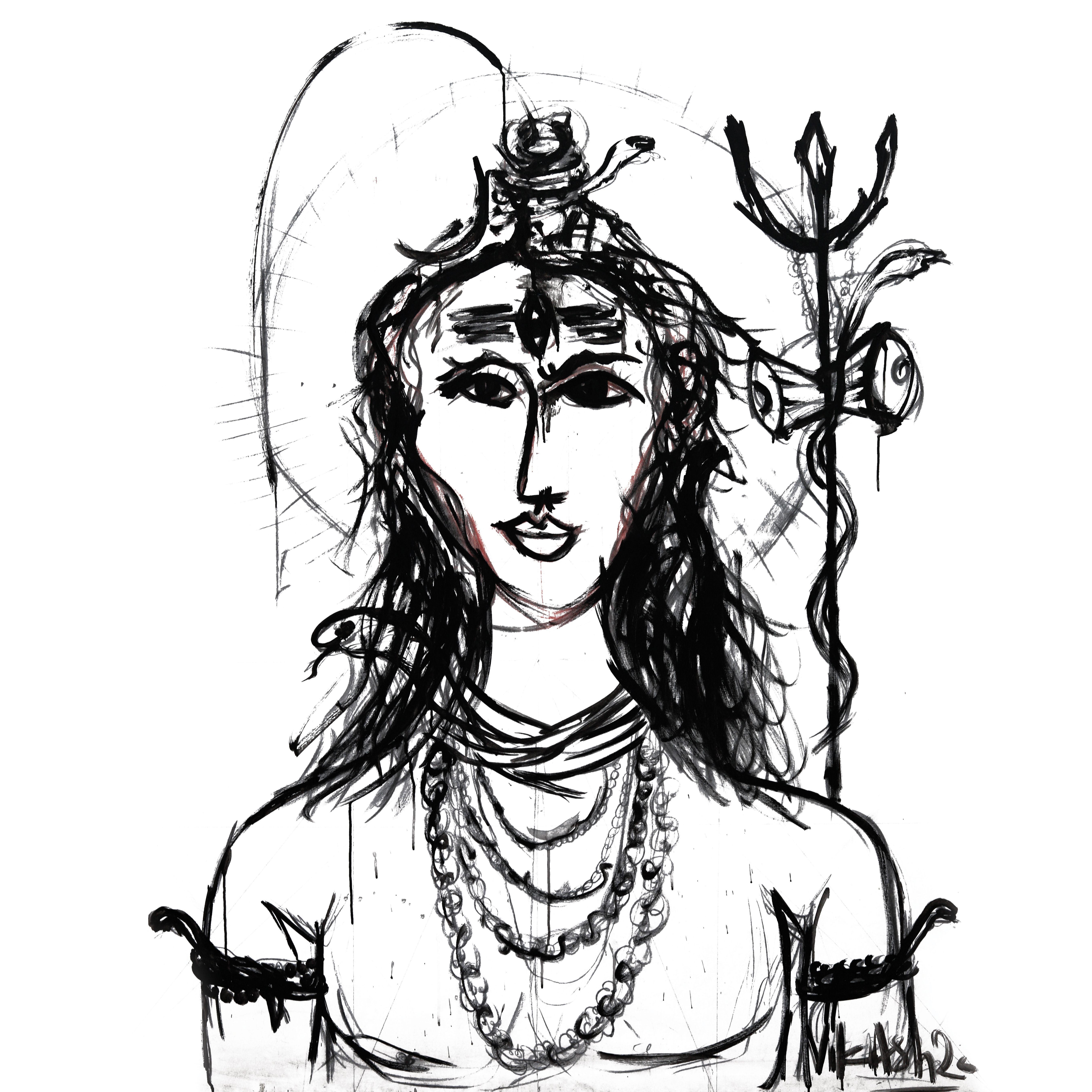
 Authenticity
Guarantee
Authenticity
Guarantee Bid in auction or buy now
Bid in auction or buy now